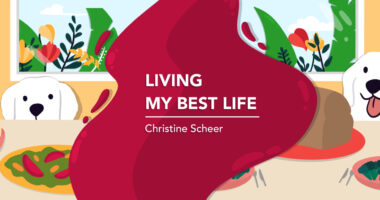Deep brain stimulation for Parkinson’s disease
Last updated March 7, 2025, by Marisa Wexler, MS

Deep brain stimulation (DBS) is a surgical treatment that involves implanting electrodes into specific areas of the brain. These enable controlled electrical stimulation that can modulate neural activity and help ease symptoms associated with Parkinson’s disease.
How does deep brain stimulation work in Parkinson’s disease?
Parkinson’s disease is caused by the death and degeneration of nerve cells in the brain that produce a chemical messenger called dopamine. The loss of these cells, called dopaminergic neurons, disrupts the normal circuitry of the brain — some nerve cells fire too much, others too little — leading to disease symptoms.
The aim of deep brain stimulation for Parkinson’s disease is to normalize electrical activity in the brain by delivering targeted electrical stimulation. This modulation of neural activity can help restore a more typical nerve firing pattern, which can ease Parkinson’s motor symptoms.
DBS involves planting one or more small wires, called leads, into the brain. Most of the time, DBS for Parkinson’s targets a brain region called the subthalamic nucleus, though other parts of the brain such as the globus pallidus interna may be considered based on an individual’s situation and symptoms.
The leads in the brain are connected to a small electrical generator, called a neurostimulator, which is similar to a heart pacemaker and is implanted in the chest under the collarbone or in the abdomen. The neurostimulator delivers electrical current through the leads to stimulate the targeted areas of the brain.
What happens during DBS surgery?
Before DBS surgery, patients and their doctors should go over the potential risks and benefits of the procedure so that everyone knows what to expect. It’s also recommended that patients undergo neuropsychological testing before DBS.
The surgery is generally conducted in two phases. First, doctors implant the leads in the brain, using imaging technology like MRI to guide their placement. This is usually done while the patient is awake, so doctors can communicate with the patient and ensure that the leads are placed in the spots that will deliver maximum benefit.
In the second phase, the neurostimulator is implanted into the chest and connected with the leads, using extensions made of insulated wire passed under the skin. This part of the surgery is usually done under general anesthesia, meaning the patient is asleep during the procedure.
A patient will usually take a few weeks to recover before the DBS device is turned on. Patients and their care teams work to determine the device settings that will provide optimal symptom relief with minimal side effects.
The neurostimulator battery will usually need replacement after a few years to ensure that the device continues to function optimally. The battery replacement is done as a separate surgical procedure.
Who with Parkinson’s can receive DBS?
DBS is approved by the U.S. Food and Drug Administration (FDA) for:
- tremor associated with Parkinson’s disease
- advanced Parkinson’s symptoms
- early Parkinson’s symptoms in patients who have had the disease for at least four years and whose motor symptoms are not adequately controlled with medication.
Some people are more likely to benefit from DBS than others. In general, DBS is most likely to benefit patients whose Parkinson’s diagnosis was at least five years earlier and who are experiencing any of the following symptoms:
- tremor that cannot be adequately controlled with medications
- substantial fluctuations in the severity of motor symptoms throughout the day that cannot be controlled by adjusting medications
- severe dyskinesias (uncontrolled movements) as a side effect of medications.
Factors that make someone a good candidate for DBS include:
- having symptoms that generally respond to the Parkinson’s treatment levodopa
- being able to tolerate surgery well
- not having substantial cognitive problems
- having a good support network, with people who can provide help throughout the DBS process.
There are also factors that indicate a patient is probably not a good candidate for DBS. Risk factors for deep brain stimulation in Parkinson’s include:
- overall poor health
- severe dementia or other substantial cognitive issues
- symptoms that do not respond well to levodopa
- lack of support network
- atypical forms of Parkinson’s.
Types of deep brain stimulation in Parkinson’s disease
Two types of deep brain stimulation are approved by the FDA to treat Parkinson’s symptoms: continuous DBS and adaptive DBS.
Continuous DBS
Traditional, or continuous, DBS involves the delivery of a constant level of electrical stimulation to the targeted brain region over time, regardless of changes in a patient’s symptoms or medication levels.
While patients may have the ability to turn the stimulation on or off, settings, including the intensity and frequency of stimulation, are predetermined and adjusted with the assistance of the patient’s healthcare team. To deliver optimal stimulation, continuous DBS requires device programming over time, which can involve a lengthy trial-and-error process.
Adaptive DBS
Adaptive DBS is a newer system available in the U.S. and Europe. It works by measuring electrical activity in the brain and modifying the stimulation delivered according to the recorded measurements.
The system uses brain-computer interface technology, establishing a direct communication link between the brain and an external device. This allows the interface to capture and decipher neural signals from the brain, which in turn inform the device on the appropriate stimulation parameters to apply.
By adapting to the real-time changes in neural signals, adaptive DBS aims to optimize therapeutic outcomes and provide more personalized symptom control while minimizing potential side effects associated with continuous DBS systems.
Benefits of deep brain stimulation in Parkinson’s disease
Like any Parkinson’s treatment, DBS can help ease the symptoms of Parkinson’s but does not cure the disease and generally does not make symptoms disappear.
Parkinson’s motor symptoms that tend to respond best to DBS treatment include:
- tremor
- stiffness
- slowness of movement (bradykinesia)
- repetitive or sustained muscle twitching or spasms (dystonia)
- uncontrolled movements (dyskinesia).
DBS can also help address some nonmotor symptoms such as sleep, pain, and urinary urgency.
When performed on patients who are good candidates for the operation, deep brain stimulation in Parkinson’s can have a high success rate.
Studies have suggested that, when patients respond to the treatment, the benefits of deep brain stimulation for Parkinson’s can last for a decade.
Parkinson’s patients who have received DBS usually need to keep taking medications to help manage their symptoms, but it is often possible to substantially reduce the amount of medication needed to adequately control symptoms. This can help lessen side effects like dyskinesia.
While DBS can be effective for the symptoms listed above, other Parkinson’s symptoms tend not to improve with DBS and will typically continue to worsen over time despite surgery. These include walking difficulty, speech problems, and issues with cognition and mood.
Potential risks of deep brain stimulation in Parkinson’s disease
DBS, like any major surgical procedure, comes with risks. These include a small risk of serious complications that can in rare cases be life-threatening.
Some of the risks associated with this Parkinson’s surgery include:
- incorrect placement of the leads in the brain
- bleeding in the brain
- infection
- difficulty breathing
- nausea
- heart problems
- seizure
- stroke
- coma.
Patients may also experience side effects related to the surgery itself. These include:
- pain or swelling at the implantation sites
- seizure
- infection
- headache
- confusion or difficulty concentrating
- stroke
- problems with the DBS hardware.
In addition to complications and side effects related to the surgery, it is also possible for the electrical stimulation that occurs during DBS to cause side effects. Some side effects of deep brain stimulation in Parkinson’s patients include:
- unusual sensations like numbness or tingling
- muscle tightness, especially in the face or arm
- difficulty with speech
- issues with balance
- lightheadedness
- problems with vision and memory
- changes in mood.
Parkinson’s Disease News is strictly a news and information website about the disease. It does not provide medical advice, diagnosis, or treatment. This content is not intended to be a substitute for professional medical advice, diagnosis, or treatment. Always seek the advice of your physician or other qualified health provider with any questions you may have regarding a medical condition. Never disregard professional medical advice or delay in seeking it because of something you have read on this website.
Recent Posts
- MJFF grant funds new PET tracer to track Parkinson’s protein clumps
- The frustration of feeling misunderstood due to Parkinson’s
- That moment the ball is in the air: A guide to living with uncertainty
- Vincere gets $5M MJFF grant to develop Parkinson’s treatment
- My 15-year journey as a successful Parkinson’s family caregiver






